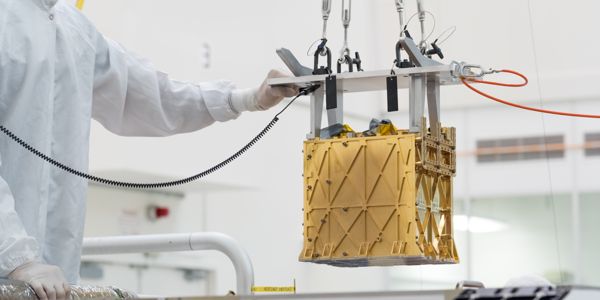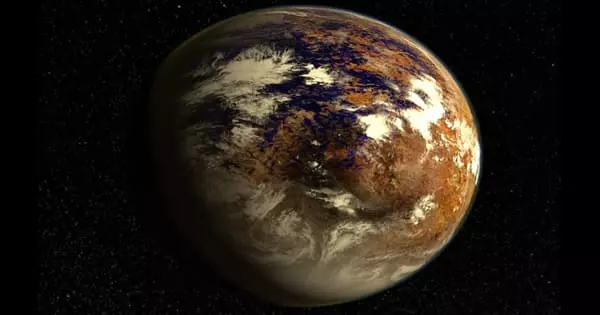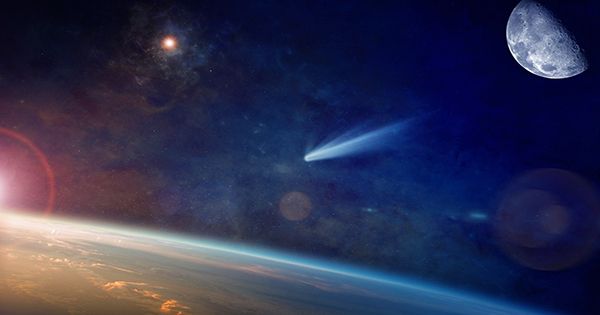The achievement of the MOXIE instrument in converting carbon dioxide into oxygen paves the way for future human exploration of Mars. Perseverance, NASA’s newest six-wheeled robot on the Martian surface, has added another “first” to its list: converting some of the Red Planet’s thin, carbon dioxide-rich atmosphere into oxygen. The Mars Oxygen In-Situ Resource Utilization Experiment (MOXIE), a toaster-sized experimental instrument aboard Perseverance, completed the task.
While the technology demonstration is still in its early stages, it has the potential to turn science fiction into science fact by isolating and storing oxygen on Mars to power rockets that could lift astronauts off the planet’s surface. Such devices may also one day provide breathable air for astronauts. MOXIE, like the Mars Environmental Dynamics Analyzer (MEDA) weather station, is an exploration technology investigation funded by NASA’s Space Technology Mission Directorate (STMD) and Human Exploration and Operations Mission Directorate.
“This is an important first step toward converting carbon dioxide to oxygen on Mars,” said Jim Reuter, STMD associate administrator. “MOXIE has more work to do, but the results of this technology demonstration are promising as we move closer to our goal of seeing humans on Mars one day. Oxygen is more than just the gas we breathe. Rocket propellant is oxygen-dependent, and future explorers will rely on producing propellant on Mars to return home.”
NASA’s Perseverance Mars rover extracts first oxygen from Red Planet. Mars Oxygen In-Situ Resource Utilization Experiment (MOXIE) accomplished the task of extracts oxygen.
According to Michael Hecht of the Massachusetts Institute of Technology’s Haystack Observatory, MOXIE’s principal investigator, oxygen is critical for rockets or astronauts.
A rocket must have more oxygen by weight in order to burn its fuel. A future mission to Mars would require approximately 15,000 pounds (7 metric tons) of rocket fuel and 55,000 pounds (25 metric tons) of oxygen to lift four astronauts off the Martian surface. Astronauts living and working on Mars, on the other hand, would require far less oxygen to breathe. “Astronauts who spend a year on the surface will probably use one metric ton between them,” Hecht predicted.
It would be a difficult task to transport 25 metric tons of oxygen from Earth to Mars. Transporting a one-ton oxygen converter – a larger, more powerful descendant of MOXIE capable of producing those 25 tons – would be far more cost-effective and practical.
The atmosphere of Mars is composed of 96 percent carbon dioxide. MOXIE works by separating oxygen atoms from carbon dioxide molecules (one carbon atom and two oxygen atoms). Carbon monoxide is emitted into the Martian atmosphere as a waste product.
To reach a temperature of approximately 1,470 degrees Fahrenheit, the conversion process necessitates a high level of heat (800 Celsius). The MOXIE unit is made of heat-resistant materials to accommodate this. These include 3D-printed nickel alloy parts that heat and cool the gases flowing through it, as well as a lightweight aerogel that aids in heat retention. MOXIE’s exterior has a thin gold coating that reflects infrared heat, preventing it from radiating outward and potentially damaging other parts of Perseverance.

MOXIE’s oxygen production in this first operation was quite modest — about 5 grams, which is equivalent to about 10 minutes’ worth of breathable oxygen for an astronaut. MOXIE is intended to produce up to 10 grams of oxygen per hour.
This technology demonstration was intended to ensure that the instrument survived the launch from Earth, the nearly seven-month journey through deep space, and the February 18 touchdown with Perseverance. Over the course of a Martian year, MOXIE is expected to extract oxygen at least nine more times (nearly two years on Earth).
These oxygen-production runs will be carried out in three stages. The first phase will test and characterize the instrument’s function, while the second phase will put the instrument through its paces in a variety of atmospheric conditions, such as different times of day and seasons. “We’ll push the envelope” in the third phase, Hecht said, trying new operating modes or introducing “new wrinkles, such as a run where we compare operations at three or more different temperatures.”
“MOXIE isn’t just the first instrument to create oxygen on another planet,” said Trudy Kortes, STMD’s director of technology demonstrations. It’s the first technology of its kind, allowing future missions to “live off the land” by utilizing elements of another planet’s environment, also known as in-situ resource utilization.
“It’s taking regolith, the substance found on the ground, and processing it into a large structure, or taking carbon dioxide – the majority of the atmosphere – and converting it into oxygen,” she explained. “This process enables us to convert these abundant materials into useful things like propellant, breathable air, or water when combined with hydrogen.”
More About Perseverance
Astrobiology, including the search for signs of ancient microbial life, is a key goal of Perseverance’s mission on Mars. The rover will characterize the planet’s geology and past climate, pave the way for future human exploration of Mars, and be the first mission to collect and cache Martian rock and regolith (broken rock and dust).
Following NASA missions, in collaboration with ESA (European Space Agency), spacecraft would be sent to Mars to collect these sealed samples from the surface and return them to Earth for in-depth analysis.
The Mars 2020 Perseverance mission is part of NASA’s Moon to Mars exploration strategy, which also includes Artemis Moon missions to help prepare for human exploration of the Red Planet.
The Perseverance rover was built and is managed by NASA’s Jet Propulsion Laboratory in Southern California, which is managed for NASA by Caltech in Pasadena, California.
















